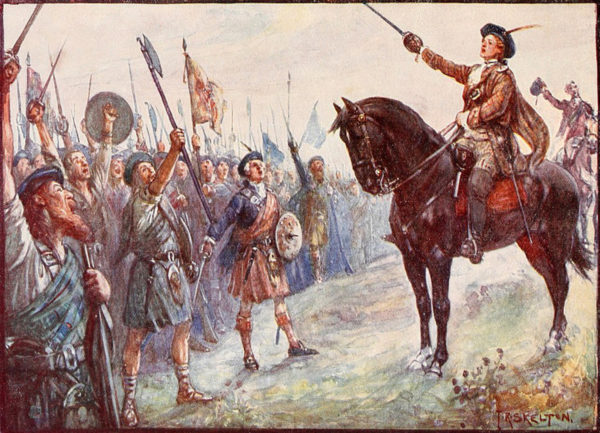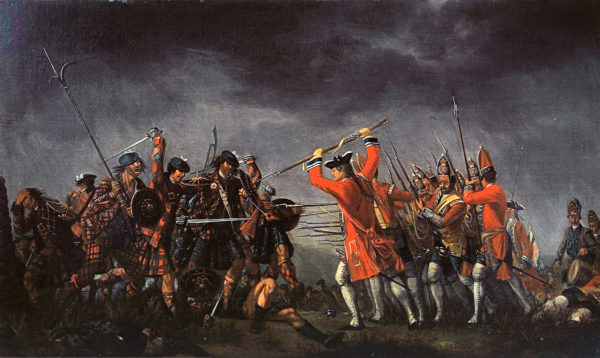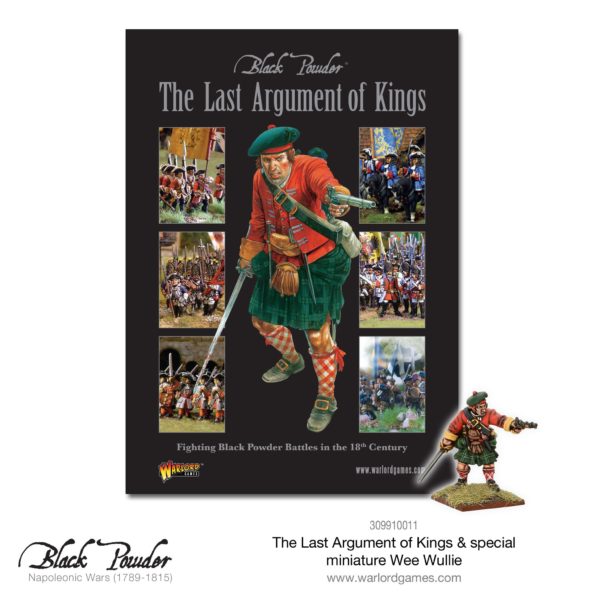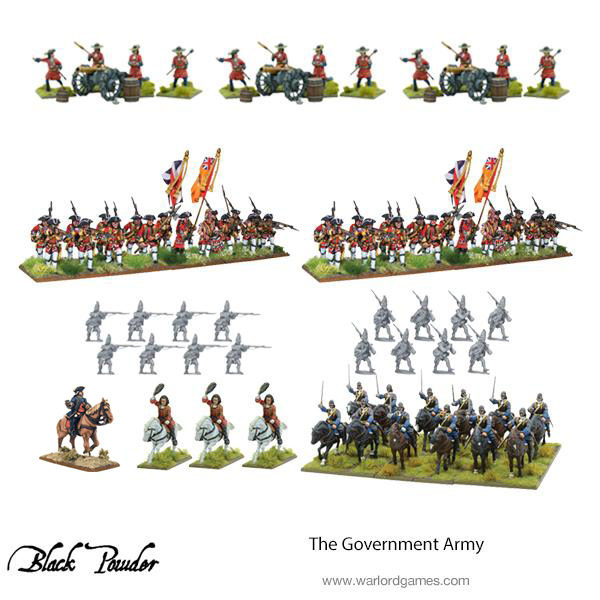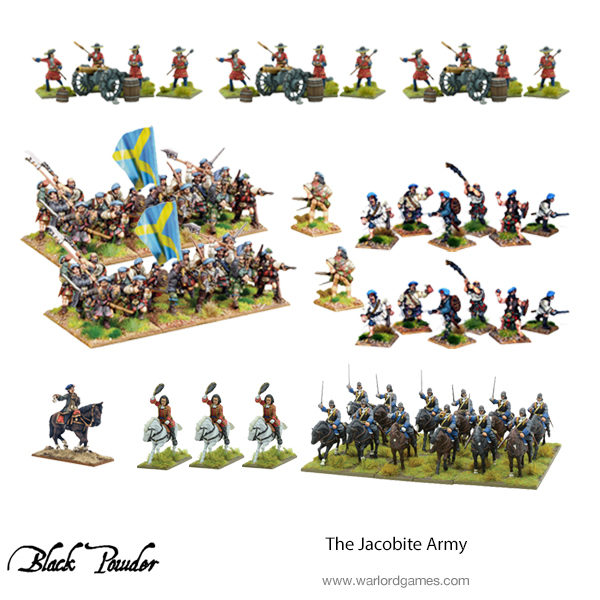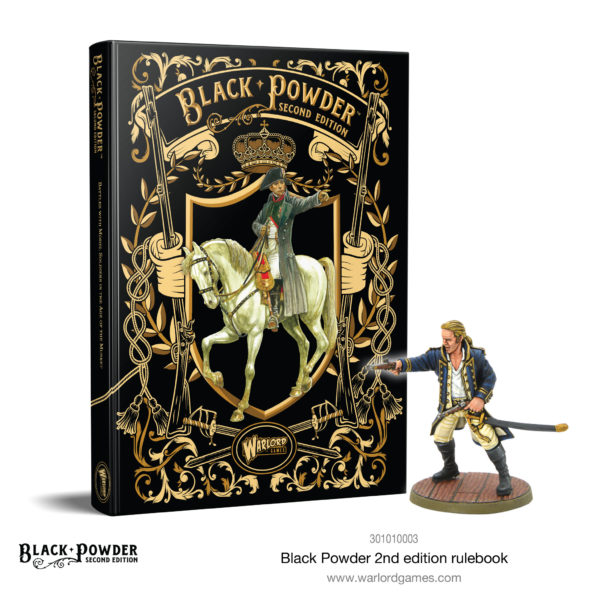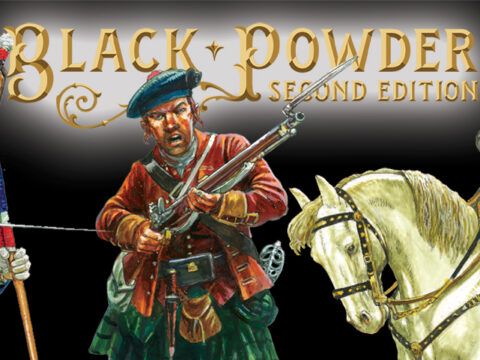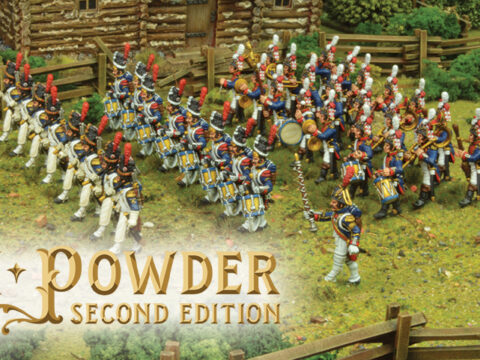We’re continuing our series of articles on getting started with Black Powder 2. After the War of Spanish Succession last week, we’re diving into the Jacobite uprising of 1745!
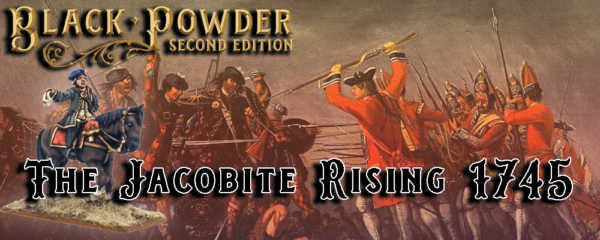
The bloody seeds that blossomed into the Jacobite Rising of 1745 were sown in the later part of the 17th century. After an act of parliament excluded dozens of Catholics from the line of succession, the balance of power in the British Isles shifted from the last members of the Stuart family to the German-born Hanoverians.
The Jacobite cause drew many to its banners, from disaffected English Protestants to fearsome Highland clansmen. These men were all united by their dislike of the new foreign-born monarch and opposition to the Acts of Union in 1707, which merged the Kingdoms of England and Scotland into a separate entity.
The French, looking to destabilize their powerful neighbour with another civil war, offered their support to the exiled Stuart pretenders, though this often amounted to lots of planning and very little tangible assistance.
Constant Revolt
From the very start, the union between England and Scotland was an unhappy one, with resistance to the merge on both sides of the border. Unsuccessful and abortive revolts in 1708 and 1715 only served to cement public opinion against the Jacobite rebels.
Almost a generation later, simmering resentment still filled the gulf between the Stuarts and Hanoverians. Chronic mismanagement of Scottish issues continued to increase tensions within the Union. On the continent, Bonnie Prince Charlie remained determined to put his father on the English throne and uphold the divine right of kings.
The Forty-Five
In November 1743, the French had assembled an army of 12,000 men which they intended to land near London, as part of the ongoing War of Austrian Succession, which had drawn much of the British Army away. Ultimately the invasion was aborted due to bad weather and the continued presence of Royal Navy ships in the channel, despite attempts to lure them away.
Bonnie Prince Charlie set about planning his own alternate invasion via Scotland. Initially dubious, the French committed only 700 men, mostly volunteers from their Irish brigade to the Young Pretender’s cause. With the Irish volunteers and seven of his closest companions, Charles set sail for Scotland in the summer of 1745.
Travelling in two ships, Charles’ small force was intercepted by the Royal Navy, and the ship carrying his arms and most of the Irish volunteers were forced to return to port. Undaunted, Charles landed at Eriskay and immediately set about drumming up support for the uprising.
After Charles raised the royal standard in August, the Jacobite army numbered some 2,000 men and advanced on Edinburgh which fell after a swift siege. Shortly after, the Jacobites fought their first pitched battle against the Government forces at Prestonpans, routing them with a single dramatic charge!
England Invaded!
After Prestonpans, the Jacobites paused to catch their breath and plan their invasion of England. Their Hanoverian opponents were not sitting idle, recalling the Duke of Cumberland and 12,000 troops from Flanders.
The Jacobites swept over the border without resistance on November 8th 1745, overwhelming the disastrously understrength garrison at Carlisle a week later before striking south. Reaching Manchester on November 28th, the Jacobites took on new recruits and continued on to Derby.
At Derby, there was no sign of the promised French invasion and the rising of English Jacobites had failed to materialize. At the same time, reinforcements had landed at Montrose, along with supplies of much-needed weaponry, ammunition and silver.
With two Government armies closing on their line of march, the Jacobites made the decision to retreat northward to link up with their reinforcements and consolidate their position in the Scottish highlands.
Clifton Moor and Falkirk Muir
The fast-moving Jacobite army neatly sidestepped Government pursuit, adeptly fending off the encroaching cavalry pursuit after a violent skirmish at Clifton Moor.
Bolstered with fresh recruits and French-supplied artillery, the Jacobites spent the winter besieging Stirling Castle. On 17th January, the Jacobites dispersed another Government army under Henry Hawley at the battle of Falkirk Muir but the siege made little progress.
After two months of unsuccessful bombardment, with Hawley’s army encroaching on their lines and the Duke of Cumberland’s arrival in Aberdeen, the Jacobites abandoned the siege and retreated to Inverness. Cumberland and his Government army advanced to Aberdeen. Both sides settled in to wait out the bad weather.
Culloden
With a Royal Navy blockade strangling the supply lines, and Cumberland’s army advancing from Aberdeen, Charles and his Jacobite army decided to fight a decisive battle. Retreating in the face of the Government army, the Jacobites made their stand at Culloden on 16th April 1746.
The Jacobites had won previous battles with a single decisive charge, breaking their battle-line and routing them from the field. Cumberland’s army had trained extensively in resisting this fearsome charge and was able to resist the initial assault.
With the advantage of better training, heavier firepower and marshy ground protecting their flanks, the Government forces inflicted 1,500 casualties and routed the Jacobites.
This disastrous loss put an end to the Jacobite resistance and ushered in a series of bitter reprisals that would be felt across Scotland for a generation.
The Jacobite Risings in Black Powder 2
The Jacobite Risings provide the perfect starting point for Black Powder 2. Filled with characterful commanders, revolutionary tactics, all set against the background of civil war and insurgency.
We’ve put together a few bundles to help you get started with the period. You’ll also need a copy of the army lists from the Last Argument of Kings supplement.
We’ve scoured our ranges for appropriate models and put together two starter armies for the period. One for the fearsome Jacobites and another for the Duke of Cumberland’s stalwart Government regulars.
The Government forces are a mix of our fantastic French-Indian Wars range and the War of Spanish Succession range we showed off last week. The Government Army bundle gives you the miniatures to build:
- 4 x 12-man infantry units, or 2 x 24-man infantry units.
- 4 x commanders, including the Duke of Cumberland
- 3 x cannons
- 12 x cavalry
This is a great starter force for small games of Black Powder 2 and can be rapidly expanded on for larger battles.
The Jacobite forces are mostly drawn from our spectacular Pike & Shotte ranges, which you can augment with the French-Indian war infantry to represent the French and Irish regulars that fought alongside the Jacobites throughout the campaign. The Jacobite Army bundle gives you the miniatures to build:
- 4 x 12-man infantry warbands, or 2 x 24-man infantry warbands.
- 4 x commanders, including Bonnie Prince Charlie.
- 3 x cannons
- 12 x cavalry
Get Black Powder 2!
Grab a copy of Block Powder from our webstore today, complete with a free Lucky Jack miniature!

